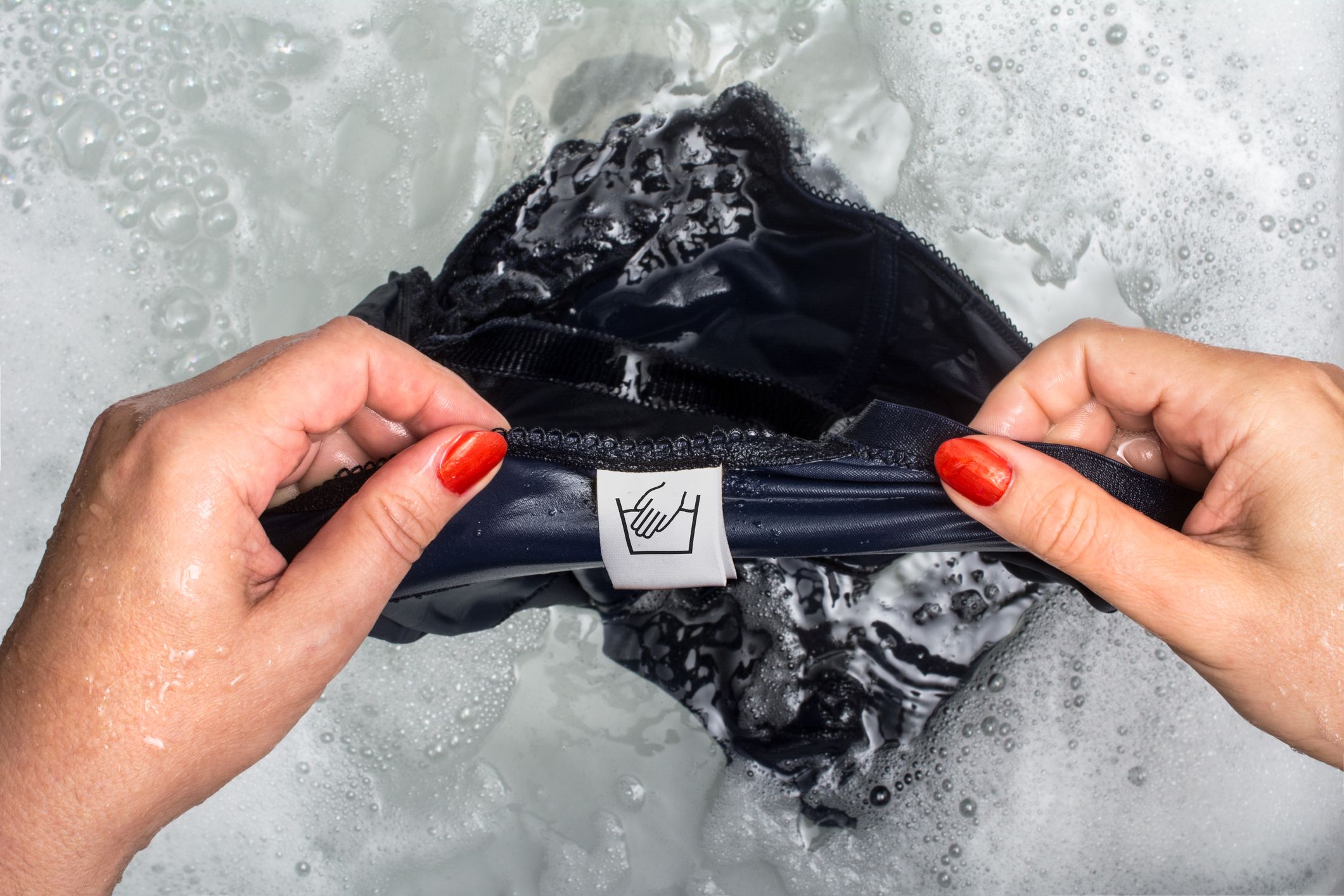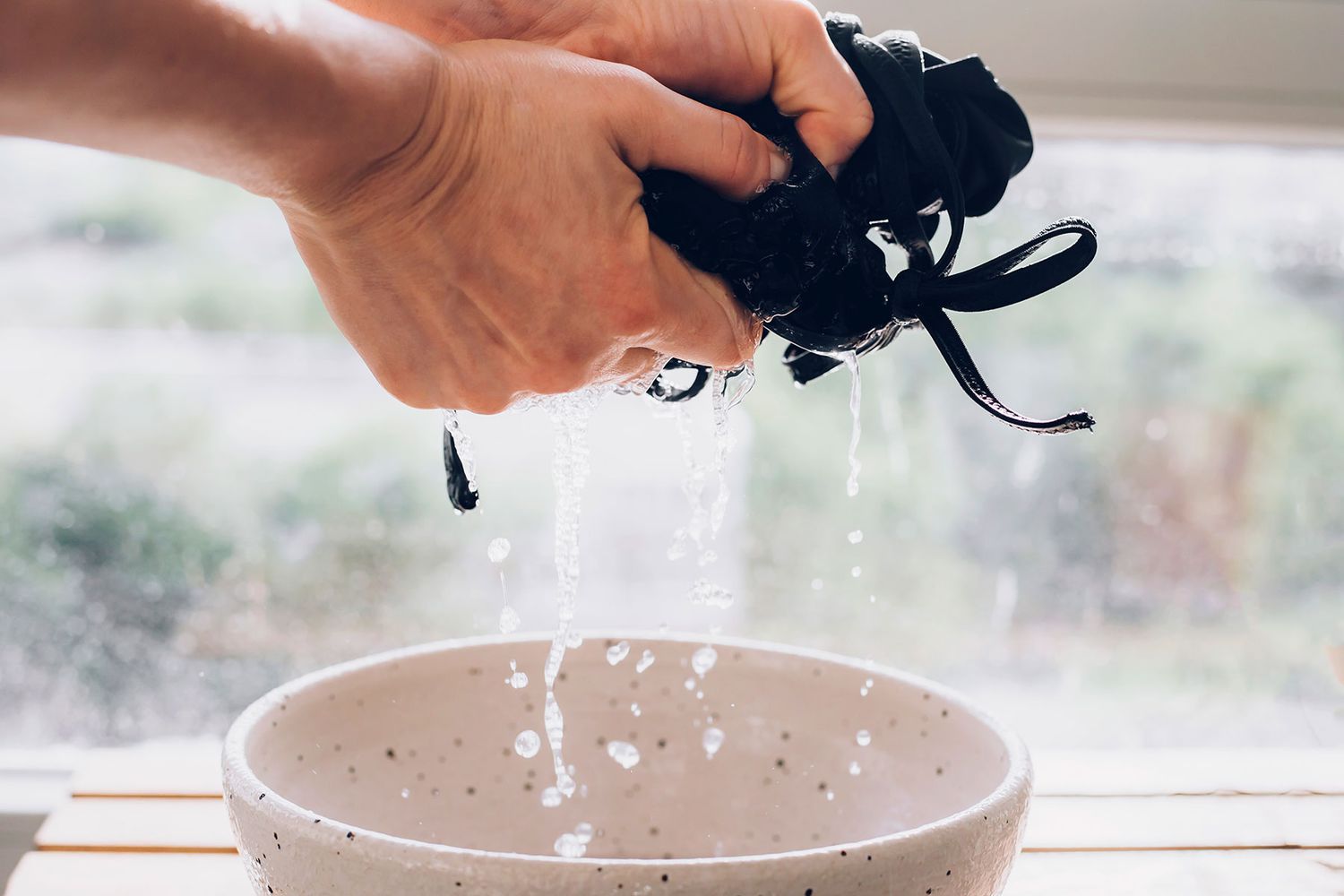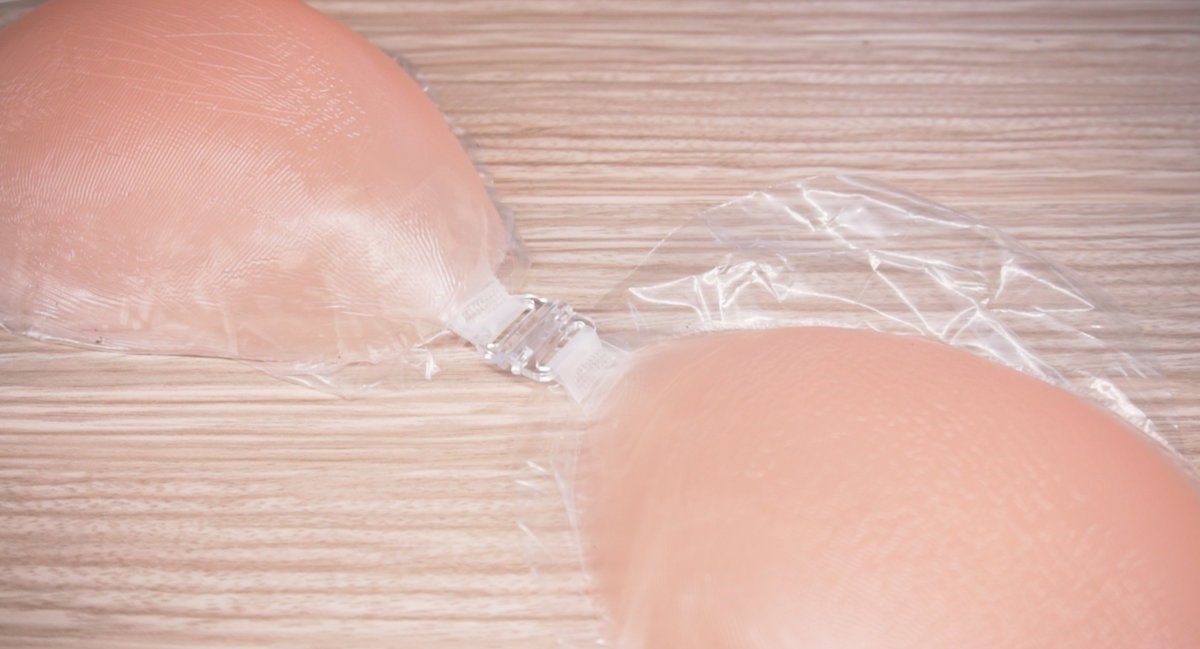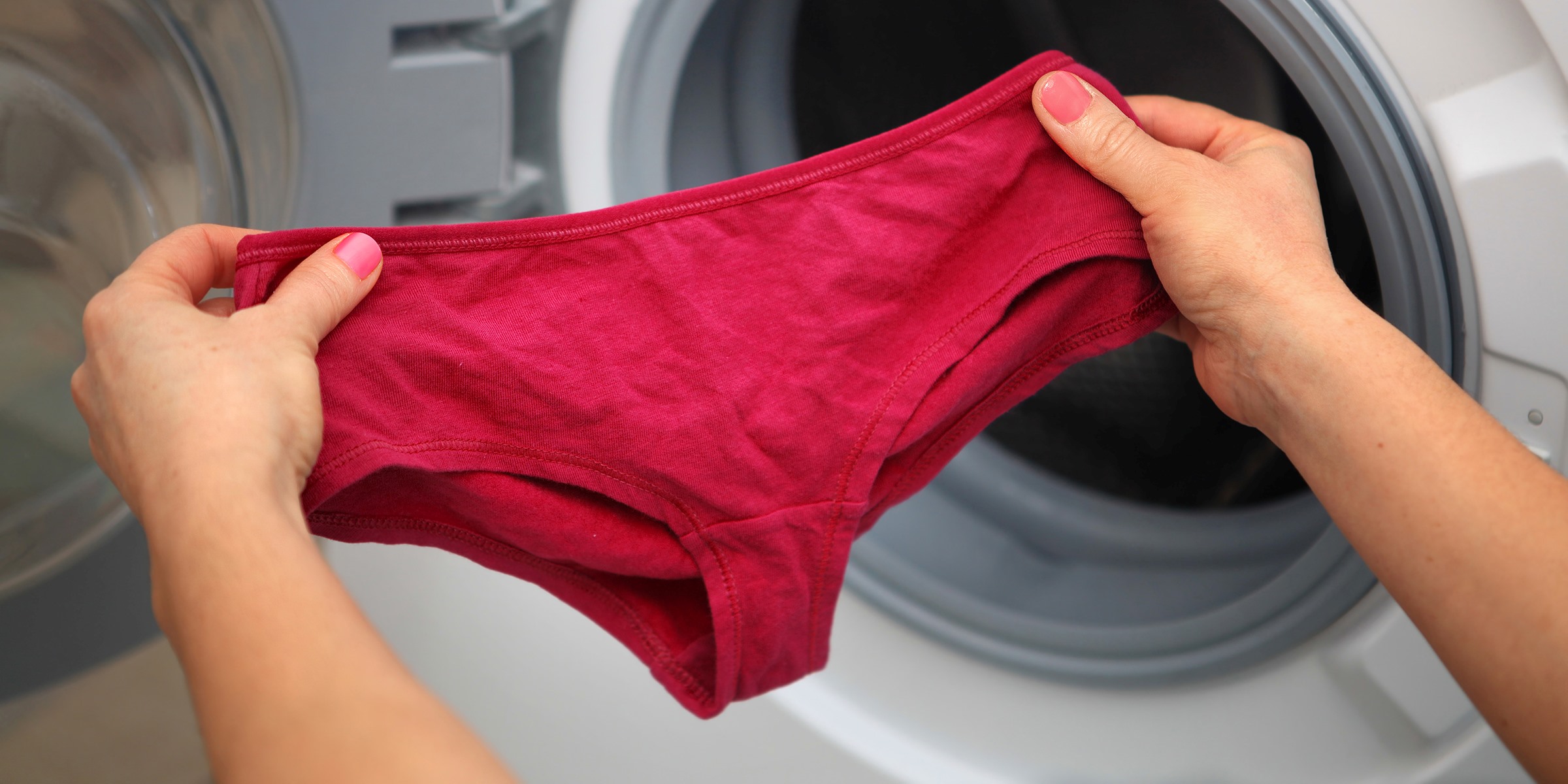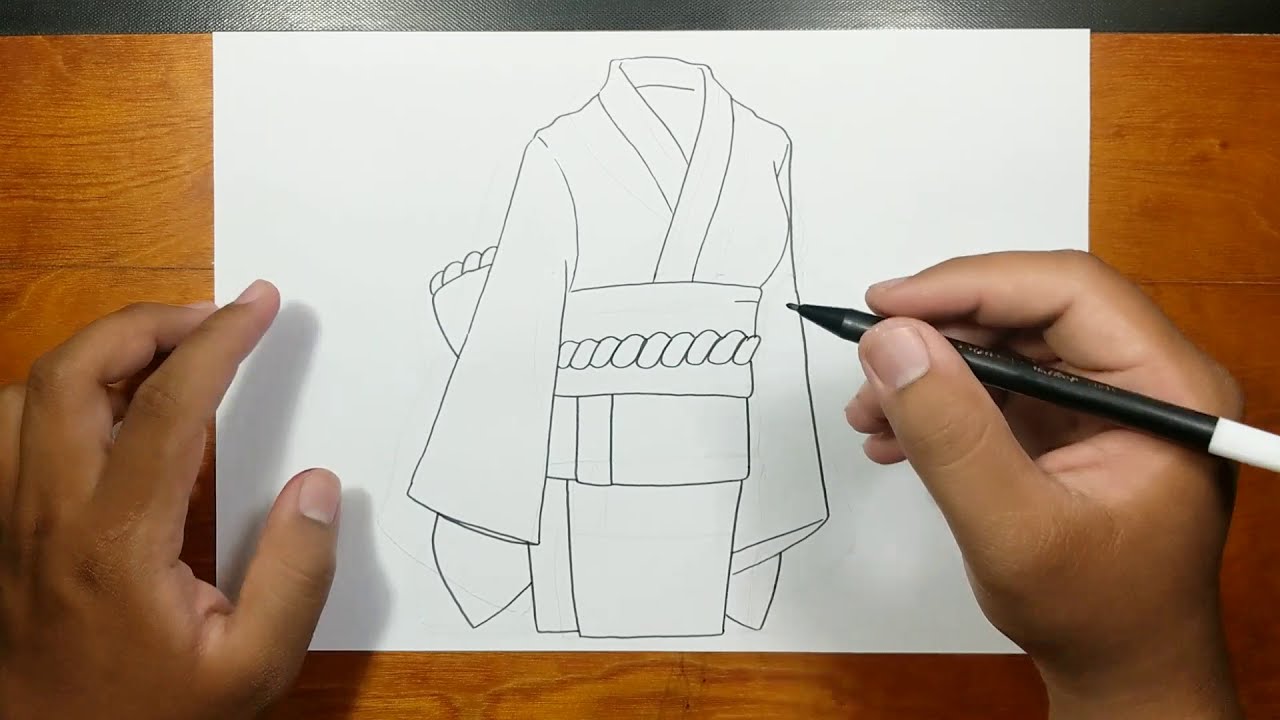Home>How-to Guides>For All>How To Wash Kimono


For All
How To Wash Kimono
Modified: August 25, 2023
Discover the ultimate guide on how to wash kimono for all types. Learn the best techniques and products to keep your cherished garments clean and beautifully maintained.
(Many of the links in this article redirect to a specific reviewed product. Your purchase of these products through affiliate links helps to generate commission for Under-tec.com, at no extra cost. Learn more)
Table of Contents
Introduction
Kimono, the traditional Japanese garment, is not only a piece of clothing but also a symbol of elegance and beauty. Whether you’ve recently acquired a kimono or you have one that needs cleaning, knowing how to wash it properly is essential to preserve its color, texture, and overall quality.
In this article, we will guide you through the step-by-step process of washing a kimono, including gathering the necessary supplies, preparing the garment for washing, hand washing and machine washing methods, drying techniques, ironing and pressing tips, as well as proper storage to ensure your kimono remains in excellent condition.
Gently handling and cleaning your kimono will not only extend its lifespan but also maintain its vibrancy and beauty. By following these guidelines, you can confidently wash your kimono at home without the need for professional services.
Before we delve into the specifics, it’s important to note that not all kimonos are suitable for washing at home. Some may require specialized cleaning methods due to the delicate nature of the fabric or intricate embroidery. If you are unsure about the appropriate cleaning method for your kimono, it’s best to consult a professional cleaner or contact the manufacturer for guidance.
Now, let’s gather the supplies needed for washing your kimono.
Gathering the Supplies
Before you start washing your kimono, it’s essential to gather all the necessary supplies. Having everything ready and within reach will make the process more efficient and help you avoid any interruptions during the cleaning process. Here are the supplies you’ll need:
- Mild Detergent: Choose a gentle, pH-neutral detergent specially formulated for delicate fabrics. Avoid using bleach or harsh chemicals, as they can damage the fibers of your kimono.
- Bathtub or Large Sink: You’ll need a clean and spacious area to wash your kimono. A bathtub or a large sink is ideal for this purpose.
- Soft Towels: Keep a couple of soft, absorbent towels nearby to gently pat and dry your kimono.
- Hangers or Clothesline: You’ll need a clothes hanger or a clothesline to hang your kimono for drying. Make sure they are clean and sturdy.
- Distilled Water (Optional): If you have hard water in your area, consider using distilled water for washing your kimono to prevent mineral buildup that can affect the fabric.
- Iron and Ironing Board: To press and remove any wrinkles from your kimono after washing, you’ll need an iron set to the appropriate temperature for the fabric. An ironing board or a clean and padded flat surface will also be required.
- Storage Container: Once your kimono is completely dry and properly pressed, you’ll need a storage container or garment bag to protect it from dust, sunlight, and moths.
Having these supplies ready will ensure a smooth and efficient kimono washing experience. Now that you have everything prepared, let’s move on to the next step: preparing the kimono for washing.
Preparing the Kimono for Washing
Before you begin washing your kimono, it’s crucial to take a few preparatory steps to ensure the best cleaning results and minimize any potential damage. Here’s what you need to do:
- Inspect for Stains or Damage: Carefully examine your kimono for any visible stains, spots, or damage. If you spot any stains, try to identify the type and consider spot-treating them before washing. If there are any loose threads or tears, make note of them so you can take extra care during the cleaning process.
- Check the Care Label: Look for the care label inside your kimono. It will provide valuable information about the fabric type and recommended cleaning instructions. Adhere to the instructions on the care label to avoid causing any irreversible damage.
- Undo Ties and Closures: If your kimono has any ties, bows, or closures, ensure they are untied or unfastened. This will prevent tangling and potential damage during the washing process. Be gentle when handling these delicate elements.
- Remove Accessories: Take off any removable accessories such as belts, obis, or decorative pins. These items can be cleaned separately or spot-treated if needed.
- Close All Zippers: If your kimono has any zippers, make sure they are fully closed. This will help protect both the kimono and the zipper itself during washing and prevent any snags or entanglements.
- Turn Inside Out (Optional): Depending on the fabric and any specific washing instructions, you may choose to turn your kimono inside out before washing. This can provide an added layer of protection for delicate prints or embroidery.
- Secure Loose Threads: If you notice any loose threads or frayed edges, gently secure them with a small, non-damaging stitch using a needle and thread. This will help prevent further unraveling during washing.
Following these preparation steps will help safeguard your kimono during the washing process and minimize the risk of causing damage to the delicate fabric or intricate details. Once you’ve prepared your kimono, you’re ready to proceed to the next step: hand washing or machine washing.
Hand Washing the Kimono
Hand washing is the preferred method for cleaning most kimonos, as it allows for more control over the process and reduces the risk of damaging the fabric. Follow these steps to hand wash your kimono:
- Fill a Clean Bathtub or Sink: Start by filling a clean bathtub or sink with lukewarm water. Avoid using hot water, as it can cause the dyes in the fabric to bleed. Fill the water to a level where the kimono can be fully submerged.
- Add Mild Detergent: Add a small amount of mild detergent to the water. Follow the manufacturer’s instructions for the appropriate amount of detergent based on the water volume and the type of kimono fabric.
- Gently Swirl the Water: Use your hand to gently swirl the water and detergent mixture, ensuring that the detergent is evenly distributed.
- Submerge the Kimono: Carefully place the kimono into the water, making sure it is fully submerged. Avoid excessive agitation or wringing.
- Soak for 15-30 Minutes: Allow the kimono to soak in the soapy water for 15-30 minutes. This will help loosen any dirt or stains from the fabric.
- Gently Massage and Rinse: After soaking, use your hands to gently massage the fabric, paying attention to stained or soiled areas. Rinse the kimono thoroughly with clean, lukewarm water until all traces of detergent are removed.
- Remove Excess Water: Carefully lift the kimono out of the water, supporting its weight to prevent stretching. Squeeze out excess water gently without wringing or twisting the fabric.
- Place on Absorbent Towels: Lay clean, absorbent towels flat on a clean surface. Place the kimono on top of the towels, smoothing out any wrinkles or folds.
- Roll Up in Towels: Roll the towels and kimono together, applying gentle pressure to absorb the remaining moisture from the kimono. Repeat this process with dry towels if necessary.
- Hang to Dry: Finally, hang the kimono on a clean hanger or clothesline in a well-ventilated area away from direct sunlight. Avoid using any sharp or metal hangers that could damage the fabric.
Hand washing the kimono allows for a delicate and thorough cleaning process. However, if your kimono’s care label specifies that it can be machine washed, you may choose to use that method instead. Let’s explore machine washing in the next section.
Machine Washing the Kimono
While hand washing is generally recommended for kimonos, certain types of kimono fabrics may be suitable for machine washing. Before proceeding with machine washing, ensure that your kimono’s care label explicitly states that it is safe for machine washing. Follow these steps to machine wash your kimono:
- Check the Care Label: Read the care label carefully to ensure that machine washing is recommended for your kimono. Pay attention to any specific temperature settings or precautions.
- Close Zippers and Fasten Buttons: Ensure that all zippers, buttons, or closures are secured to avoid any snags or damage during the washing cycle.
- Place in a Mesh Laundry Bag: To protect the kimono and minimize friction during the wash, place it inside a mesh laundry bag. This will help prevent it from getting tangled with other items in the load.
- Select the Delicate Cycle: Set your washing machine to the delicate or gentle cycle, using cool or lukewarm water. Avoid using hot water, as it can cause the colors to bleed or the fabric to shrink.
- Use a Mild Detergent: Add a small amount of mild detergent to the washing machine. Avoid using bleach or harsh chemicals, as they can damage the fabric.
- Start the Washing Cycle: Start the machine and allow it to complete the washing cycle as per the manufacturer’s instructions. Avoid using a spin cycle as it may cause excessive agitation.
- Remove from the Machine: Once the cycle is complete, promptly remove the kimono from the machine to prevent wrinkling or creasing.
- Remove Excess Water: Gently squeeze out any excess water from the kimono without wringing or twisting the fabric.
- Place on Absorbent Towels: Lay clean, absorbent towels flat on a clean surface. Place the kimono on top of the towels to absorb the remaining moisture.
- Roll Up in Towels: Roll the towels and kimono together, applying gentle pressure to absorb the remaining moisture from the fabric. Repeat this process with dry towels if necessary.
- Hang to Dry: Finally, hang the kimono on a clean hanger or clothesline in a well-ventilated area, away from direct sunlight, to dry completely.
Remember, not all kimonos are suitable for machine washing. Always check the care label and follow the specific instructions provided to ensure the safety and longevity of your kimono.
Next, we will explore the proper drying techniques for your washed kimono.
Drying the Kimono
Properly drying your kimono is crucial to prevent damage and maintain its shape and integrity. Whether you hand washed or machine washed your kimono, follow these steps to dry it effectively:
- Gently Remove Excess Water: After washing, remove the kimono from the towels and gently squeeze out any remaining water. Be careful not to wring or twist the fabric, as this can lead to stretching or distortion.
- Do Not Hang: Avoid hanging your wet kimono to dry, as the weight of the water can cause stretching and deformation. Instead, proceed to the next step.
- Lay Flat on a Clean Towel: Find a clean, flat surface and lay a soft, dry towel on it. Carefully place the kimono on top of the towel, smoothing out any wrinkles or folds.
- Reshape if Necessary: If you notice any areas where the fabric has slightly stretched or lost its shape, gently reshape the kimono using your hands to maintain its proper form.
- Avoid Direct Sunlight: Place the towel-covered kimono in a well-ventilated area away from direct sunlight or heat sources. Excessive exposure to sunlight can fade the colors of the fabric over time.
- Let it Air Dry: Allow the kimono to air dry naturally. This may take several hours or even overnight, depending on the thickness of the fabric and the humidity in the environment.
- Check for Dryness: Before moving on to ironing or storing, ensure that the kimono is completely dry. You can do this by touching the fabric or checking for any remaining dampness.
It’s essential to exercise patience during the drying process, as rushing can lead to wrinkling, shrinkage, or other damage. Once your kimono is thoroughly dry, you can proceed with ironing and pressing it to restore its smooth, elegant appearance.
Let’s move on to the next section and learn about the best practices for ironing and pressing your kimono.
Ironing and Pressing the Kimono
Ironing and pressing your kimono is an important step in restoring its crisp and polished look after washing. Follow these guidelines to properly iron and press your kimono:
- Check the Fabric Type: Before ironing, check the care label or refer to the manufacturer’s instructions to determine the appropriate ironing temperature for your kimono fabric. Different fabrics may require different heat settings.
- Prepare the Ironing Area: Set up the ironing board in a clean and well-ventilated area. Make sure the ironing surface is clean and free of any debris that may transfer onto the kimono.
- Set the Iron: Adjust the iron to the recommended temperature for your kimono fabric. Allow it to heat up fully before beginning the ironing process.
- Test on a Small Area: Before ironing the entire kimono, test a small inconspicuous area to ensure that the ironing temperature is suitable for the fabric. This will help you avoid accidentally damaging the kimono.
- Start Ironing: Begin ironing the kimono by starting with the less visible areas, such as the inside or the back. Place a clean cloth or a press cloth over the kimono fabric to protect it from direct contact with the iron.
- Use Light Pressure and Smooth Strokes: Apply light pressure and use smooth, gentle strokes while ironing. Avoid leaving the iron in one spot for too long, as this can cause burning or scorching of the fabric.
- Pay Attention to Details: Take care when ironing intricate details, such as embroideries or delicate prints. Use the tip of the iron or a smaller iron for these areas if necessary.
- Iron in Sections: Divide the kimono into manageable sections and iron each section carefully. Work from the collar area downward, following the natural flow of the fabric.
- Hang Properly: After ironing, hang the kimono on a clean hanger or lay it flat on a clean surface to avoid unnecessary wrinkling before storing.
By following these ironing and pressing guidelines, you can restore the sleek appearance of your kimono and enhance its overall elegance. Now that your kimono is freshly pressed, it’s time to move on to the final section: proper storage.
Storing the Kimono
Proper storage is essential to maintain the condition of your kimono and protect it from damage. Follow these steps to ensure that your kimono is stored correctly:
- Clean and Dry: Before storing your kimono, ensure that it is thoroughly cleaned and completely dry. Any residual moisture can lead to mold or mildew growth.
- Use Acid-Free Tissue Paper: Place acid-free tissue paper between layers of the kimono to help prevent any color transfer and to provide additional protection.
- Protect from Light and Dust: Store your kimono in a location away from direct sunlight, as it can fade the colors over time. Additionally, protect it from dust by using garment bags or wrapping it in a clean cotton sheet.
- Avoid Plastic Bags: Avoid storing your kimono in plastic bags, as they can trap moisture and promote the growth of mold or mildew. Opt for breathable storage options instead.
- Consider Climate Control: If possible, store your kimono in a location with stable temperature and humidity levels. Extreme fluctuations in these conditions can be detrimental to the fabric.
- Rotate Occasionally: To prevent creases or permanent folds, consider rotating the kimono’s folding pattern periodically. This will distribute any potential stress points evenly.
- Avoid Moth Infestation: To protect your kimono from moth damage, consider using natural deterrents such as cedar chips or lavender sachets in the storage area.
- Check on Regular Basis: Every few months, inspect your stored kimono for any signs of damage or discoloration. This will allow you to address any issues promptly and prevent further damage.
By following these storage guidelines, you can ensure that your kimono remains in excellent condition and ready to be enjoyed for years to come.
With these steps completed, you have successfully learned how to wash, dry, iron, and store your kimono. By taking proper care of this traditional garment, you can preserve its beauty and significance for generations to come.
Tips and Precautions for Washing Kimono
When it comes to washing your kimono, it’s essential to take certain precautions and follow some helpful tips to ensure the best results and preserve the quality of the garment. Here are some valuable tips and precautions to keep in mind:
- Read the Care Label: Always refer to the care label or any manufacturer’s instructions provided with your kimono. This will give you specific guidelines on the appropriate cleaning method and any precautions to take.
- Spot Treat Stains Carefully: If you notice any stains on your kimono, avoid harsh rubbing or scrubbing, as it can damage the fabric. Use gentle spot-cleaning techniques or consult a professional cleaner if needed.
- Test Dyes and Fabrics: Before washing the entire kimono, test the dyes and fabrics for colorfastness and potential reactions. This can help prevent color bleeding or damage to the fabric during the washing process.
- Avoid Aggressive Washing Methods: Whether hand washing or using a washing machine, always handle your kimono gently. Avoid excessive agitation, wringing, or twisting, as it can lead to stretching, distortion, or damage to delicate elements.
- Separate Colors: If your kimono has different colored sections, consider separating them during washing to prevent color bleeding. This can be done by using separate washing basins or mesh laundry bags for different sections.
- Dry Cleaning: If your kimono is made from delicate or vintage fabrics, or it has intricate embellishments, it may require professional dry cleaning. Consult a specialized cleaner experienced in handling kimonos to ensure proper care.
- Regular Inspections: Take the time to regularly inspect your kimono for any signs of damage, loose threads, or discoloration. Promptly address any issues to prevent further deterioration that may be challenging to repair.
- Knowledgeable Assistance: If you are unsure about any aspect of washing your kimono, such as the fabric type or the appropriate cleaning method, seek the advice of professionals, such as textile conservators or specialized kimono cleaners.
- Handle with Clean Hands: Always wash your hands thoroughly before handling your kimono. Natural oils and dirt on your hands can transfer onto the fabric and cause staining or discoloration over time.
By adhering to these tips and precautions, you can maintain the beauty and integrity of your kimono and ensure that it remains a cherished piece for years to come.
Now that you have a comprehensive understanding of how to wash and care for your kimono, you can confidently undertake the task with the knowledge and precautions necessary to protect this traditional garment.
Conclusion
Washing a kimono may seem like a daunting task, given its cultural significance and delicate nature. However, with the right knowledge and techniques, you can maintain the beauty and integrity of your kimono for years to come. By following the steps outlined in this article, including gathering the necessary supplies, preparing the kimono for washing, hand washing or machine washing methods, proper drying techniques, ironing and pressing tips, as well as correct storage practices, you can confidently care for your kimono at home.
Remember to always refer to the care label or any manufacturer’s instructions specific to your kimono. This will provide valuable information about the fabric type and recommended cleaning methods. Take precautions such as testing for colorfastness, spot treating stains carefully, and handling your kimono with clean hands to avoid transferring oils and dirt onto the fabric. Regularly inspect your kimono for any signs of damage or discoloration to address them promptly.
Whether your kimono is a cherished family heirloom or a recent addition to your collection, proper care is essential to preserve its vibrancy, texture, and overall quality. By putting in the effort to wash and care for your kimono in the correct way, you ensure that it remains a cherished and beautiful garment, reflecting the elegance and tradition it represents.
So, don’t hesitate to take the time to lovingly wash and care for your kimono. By doing so, you can continue to enjoy its beauty and pass it down to future generations, keeping the legacy of this timeless garment alive.
